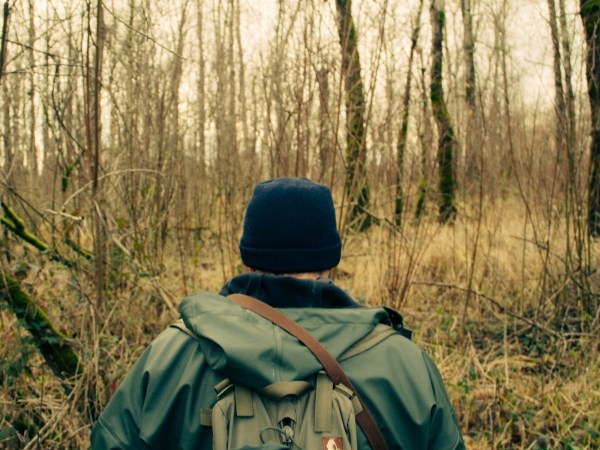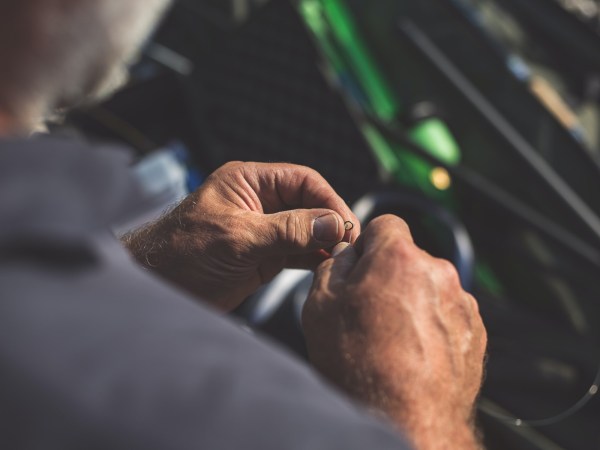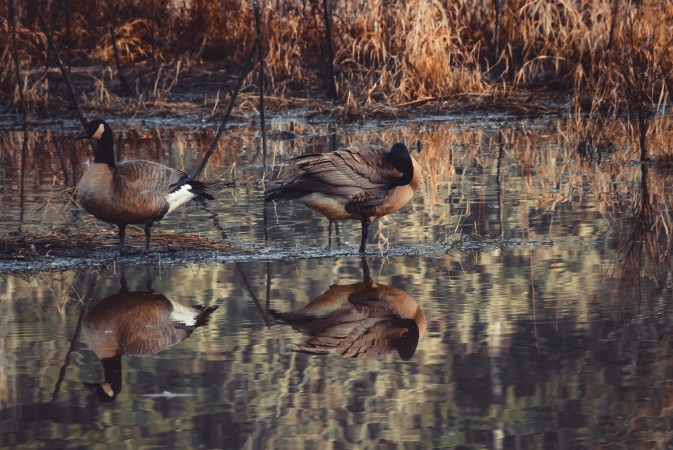

This story originally featured on Field & Stream.
If you venture into a remote area where fishing could be a means of getting food, your survival kit needs to include fishing line, hooks, and small lures. It’s worth mentioning, though, that while survival-fishing gear is smart to pack, it can also give you a false sense of security. Because finding a good place to fish in a survival situation is harder than you’d expect.
Say you do find water on a map: You might still need to bushwhack for a ways to a riverbank or rugged lakeshore, or navigate a coastline for miles before you come across a deep spot where you can catch fish. Sometimes seeking out a good fishing spot is not the best use of your energy in a survival situation when you need to prioritize shelter and fire. That being said, if you do come to an accessible fishing hole with plenty of fish, it could be a lifesaver.
There are several survival fishing techniques. They range from various styles of fish traps to trot lines to hand-fishing techniques. Below, I’ve outlined the mechanics behind three proven methods for survival fishing. Each is basic and requires relatively little rigging. In many cases, they’re also legal to use in non-survival situations—so you can head out and practice them on your own after checking the local fishing regulations.
Survival fishing method no. 1: Use a bushcraft rod
This technique starts with a fishing rod made from a stick and with a line tied to the end of it. I know it sounds almost too basic, don’t write this off. If the fish are eager to bite, and you’re in a place where vertical jigging can be effective, a bushcraft rod may be all you need. And if you need to get farther out from shore into deep water, just use a longer pole.
How to fish with a bushcraft rod
- In order to make a rod that can be cast, start by using snare wire from your survival kit to make several line guides along the shaft of the stick.
- Make a line holder: Find a deeply-curved (almost U-shaped) stick that is about 6 inches long. Carve a deep notch into both ends of this stick (see illustration above). Use snare wire to attach this stick to the base of your fishing rod—just below where you plan to grip the rod.
- Tie your fishing line to top notch on the curved stick, then wrap the line around the two curved ends. The grooves you carved will help prevent the line from sliding off.
- Thread the line through the snare-wire guides and tie your hook or lure to the end.
- To use this rod, first unwrap some line from the holder, allowing it to coil neatly on the ground. Use the weight of the lure or bait to make a cast, then retrieve it by stripping in the line with one hand while pinching the line against the rod handle with the index finger on your rod hand.

Survival fishing method no. 2: Make a hand-lining rig
The idea here is to create a line-storage mechanism for hand-line fishing that allows you to cast, and reel in, the line. A thick stick or log will work here, but it can be easier to use a water bottle. Here’s how it’s done:
How to fish with a hand-lining rig
- Tie your fishing line to the bottle, then tightly wrap line around the bottle.
- To cast, start by holding the bottle near the bottom where your hand won’t be touching any of the fishing line. With your other hand, unspool several feet of line and begin twirling the lure over your head (picture a cowboy twirling a lasso at the rodeo here). Let go so the lure launches out into the water, unraveling line off the bottle as it goes. (This survival-fishing method definitely takes some practice.)
- Reel in the lure or bait simply by wrapping the line around the bottle with your free hand, going fast enough to give the lure some action in the water.
Survival fishing method no. 3: Jug Fishing
This technique is commonly used for catfish, but it can work in a survival scenario, too. I’ve seen this done successfully with a bottle and a stick, but we’re going with the bottle method. It is “jug” fishing, after all. Note: If you’re lucky enough to find a bottle in the wilderness that will work here, use it. That way, you don’t have to worry about losing your water bottle.
How to catch dinner by jug fishing
- Tie your fishing line—armed with a sinker, hook, and bait—to the bottle. You might have better luck with the fish if you set up the rig so the sinker is on the bottom and the hook is tied a couple of feet up from the weight.
- Toss the jug out into the water, being careful not to let the line get tangled. (Again, practicing this method ahead of time helps.) If you don’t have a boat, you’ll need to attach another line to the jug so you can pull it back to shore once you get a fish, or when you have to re-rig.
Final tips on survival fishing
- Make a survival sinker: Do this by twisting a piece of snare wire around a rock and adding a loop to where you can attach it to fishing line.
- How to fish a fixed line: This technique will work with any of the fishing strategies described above. I learned this trick from Brook and Dave Whipple after they effectively used it to catch multiple fish while surviving on season four of “Alone.” Here’s how it works:
- Bring two different tests of fishing line in your survival kit, making sure one is substantially lighter than the other—12-pound and 4-pound, for example. (You’ll need a lot less of the lighter stuff.)
- Working with a short length of 4-pound line, tie one end to the sinker and the other end to your main fishing line of the stronger monofilament. Finish rigging the main line with a baited hook or lure, and cast. Allow the rig to sink to the bottom.
- When you catch a fish, chances are the sinker will get hung up during your retrieve. But the lighter test line will break with a sharp tug, detaching your sinker while still allowing you to land your fish.
Again, keep in mind that there are nuances and skills that you’ll need to hone in order to get these survival-fishing techniques down pat. That’s why it’s best to practice with them in a controlled environment, so you’ll be prepared should you ever need to use them for survival. The good news there is: These fishing methods are a lot of a lot fun to practice.















